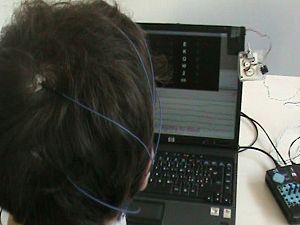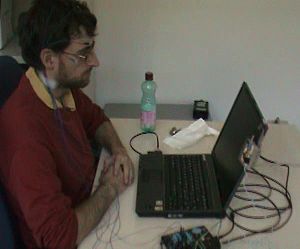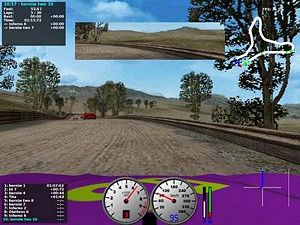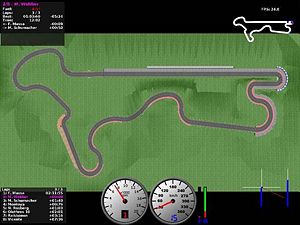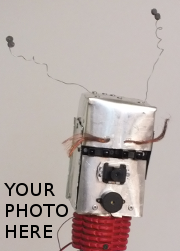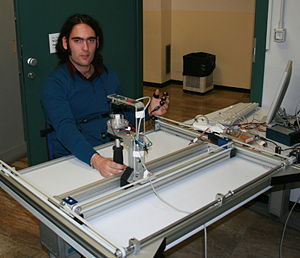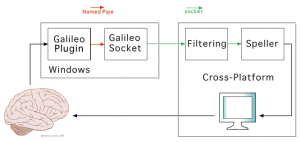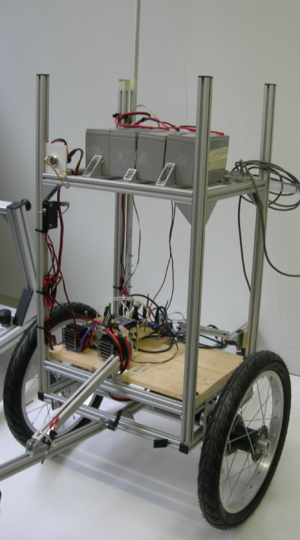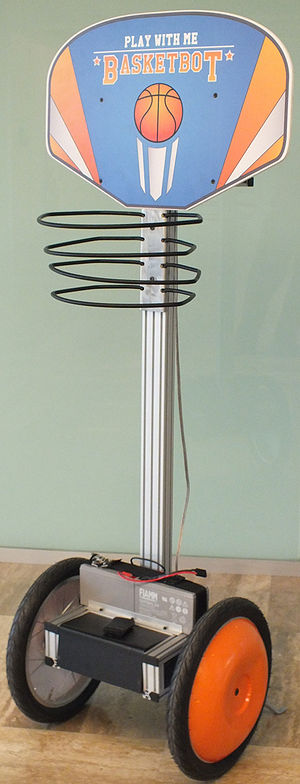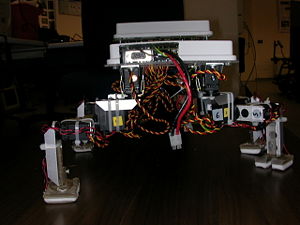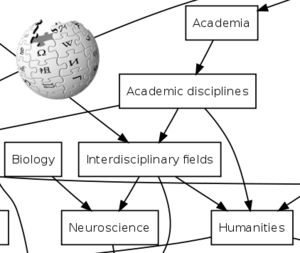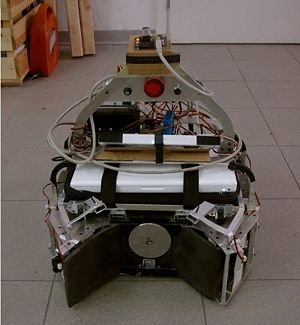Master Level Theses
Here you can find proposals for master thesis (20 CFU for each student). See Project Proposals for other kinds of projects and theses.
Contents
Evolutionary Optimization and Stochastic Optimization
| Title: | Combinatorial optimization based on stochastic relaxation | |
|---|---|---|
| Description: | The project will focus on the study, implementation, comparison and analysis of different algorithms for the optimization of pseudo-Boolean functions, i.e., functions defined over binary variables with values in R. These functions have been studied a lot in the mathematical programming literature, and different algorithms have been proposed [1]. More recently, the same problems have been faced in evolutionary computations, with the use of genetic algorithms, and in particular estimation of distribution algorithms [2,3]. Estimation of distribution algorithms are a recent meta-heuristic, where classical crossover and mutation operators used in genetic algorithms are replaced with operators that comes from statistics, such as sampling and estimation.
The focus will be on the implementation of a new algorithm able to combine different approaches (estimation and sampling, from one side, and exploitation of prior knowledge about the structure of problem, on the other), together with the comparison of the results with existing techniques that historically appear in different (and often separated) communities. Good coding (C/C++) abilities are required. Since the approach will be based on statistical models, the student is supposed to be comfortable with notions that come from probability and statistics courses. The project could require some extra effort in order to build and consolidate some background in math, especially in Bayesian statistics and MCMC techniques, such as Gibbs and Metropolis samplers [4]. The project can be extended to master thesis, according to interesting and novel directions of research that will emerge in the first part of the work. Possible ideas may concern the proposal of new algorithms able to learn existing dependencies among the variables in the function to be optimized, and exploit them in order to increase the probability to converge to the global optimum. Picture taken from http://www.ra.cs.uni-tuebingen.de/
| |
| Tutor: | Matteo Matteucci ([1]), Luigi Malagò (email) | |
| Start: | Anytime | |
| Number of students: | 1-2 | |
| CFU: | 20-40 |
BioSignal Analysis
Analysis of the Olfactory Signal
| Title: | Computational Intelligence techniques to analyse the olfactory signal acquired by an electronic nose for cancer diagnosis | |
|---|---|---|
| Description: | The electronic nose is an instrument able to detect and recognize odors, that is the volatile substances in the atmosphere or emitted by the analyzed substance. This device can react to a gas substance by providing signals that can be analyzed to classify the input. It is composed of a sensor array (MOS sensors, in our case) and a pattern classification system based on machine learning techniques. Each sensor reacts in a different way to the analyzed substance, providing multidimensional data that can be considered as a unique olfactory blueprint of the analyzed substance. We have already tested the use of the electronic nose as diagnostic tool for lung cancer; boosted from the very satisfactory results that we have achieved by these analysis, we want to investigate the possibility of diagnosing other types of cancer and to improve the current computation intelligence techniques.
The project is done in collaboration with the Istituto dei Tumori, Milano.
| |
| Tutor: | Andrea Bonarini (email), Matteo Matteucci (email), Rossella Blatt (email) | |
| Start: | Anytime (a new acquisition phase will start in March) | |
| Number of students: | 1-2 | |
| CFU: | 20 |
Sleep Staging
| Title: | Development of a computer-assisted CAP (Sleep cyclic alternating pattern) scoring method | |
|---|---|---|
| Description: | In 1985, Terzano describes for the first time the Cyclic Alternating Pattern [2] during sleep and, nowadays, CAP is widely accepted by the medical community as basic analysis of sleep. The CAP evaluation is of fundamental importance since it represents the mechanism developed by the brain evolution to monitor the inner and outer world and to assure the survival during sleep. However, visual detection of CAP in polisomnography (i.e., the standard procedure) is a slow and time-consuming process. This limiting factor generates the necessity of new computer-assisted scoring methods for fast CAP evaluation. This thesis deals with the development of a Decision Support System for CAP scoring based on features extraction at multi-system level (by statistical and signal analysis) and Pattern Recognition or Machine Learning approaches. This may allow the automatic detection of CAP sleep and could be integrated, through reinforcement learning techniques, with the corrections given by physicians.
| |
| Tutor: | Matteo Matteucci (email), Martin Mendez (email), Anna Maria Bianchi (email), Mario Terzano (Ospedale di Parma) | |
| Start: | Anytime | |
| Number of students: | 1-2 | |
| CFU: | 20 |
Brain-Computer Interface
| Title: | Recognition of the user's focusing on the stimulation matrix | |
|---|---|---|
| Description: | A P300-based BCI stimulates the user continuously, and the detection of a P300 designates the choice of the user. When the user is not paying attention to the interface, false positives are likely. The objective of this work is to avoid this problem; the analysis of the electroencephalogram (EEG) over the visual cortex (and possibly an analysis of P300s or of other biosignals) should tell when the user is looking at the interface.
| |
| Tutor: | Matteo Matteucci (email), Bernardo Dal Seno (email) | |
| Start: | Anytime | |
| Number of students: | 1-2 | |
| CFU: | 20 |
| Title: | Creation of new EEG training by introduction of noise | |
|---|---|---|
| Description: | A BCI must be trained on the individual user in order to be effective. This training phase require recording data in long sessions, which is time consuming and boring for the user. The aim of this project is to develop algorithm to create new training EEG (electroencephalography) data from existing ones, so as to speed up the training phase.
| |
| Tutor: | Matteo Matteucci (email), Bernardo Dal Seno (email) | |
| Start: | Anytime | |
| Number of students: | 1 | |
| CFU: | 20 |
| Title: | Real-time removal of ocular artifact from EEG | |
|---|---|---|
| Description: | In a BCI based on electroencephalogram (EEG), one of the most important sources of noise is related to ocular movements. Algorithms have been devised to cancel the effect of such artifacts. The project consists in the in the implementation in real time of an existing algorithm (or one newly developed) in order to improve the performance of a BCI.
| |
| Tutor: | Matteo Matteucci (email), Bernardo Dal Seno (email) | |
| Start: | Anytime | |
| Number of students: | 1 | |
| CFU: | 10-20 |
| Title: | Aperiodic visual stimulation in a VEP-based BCI | |
|---|---|---|
| Description: | Visual-evoked potentials (VEPs) are a possible way to drive the a BCI. This projects aims at maximizing the discrimination between different stimuli.
| |
| Tutor: | Matteo Matteucci (email), Bernardo Dal Seno (email) | |
| Start: | Anytime | |
| Number of students: | 1 | |
| CFU: | 20 |
| Title: | Driving an autonomous wheelchair with a P300-based BCI | |
|---|---|---|
| Description: | This project pulls together different Airlab projects with the aim to drive an autonomous wheelchair (LURCH) with a BCI, through the development of key software modules. The work will be validated with live experiments.
| |
| Tutor: | Matteo Matteucci (email), Bernardo Dal Seno (email) | |
| Start: | November 2008 | |
| Number of students: | 1 | |
| CFU: | 5-20 |
| Title: | Online automatic tuning of the number of repetitions in a P300-based BCI | |
|---|---|---|
| Description: | In a P300-based BCI, (visual) stimuli are presented to the user, and the intention of the user is recognized when a P300 potential is recognized in response of the desired stimulus. In order to improve accuracy, many stimulation rounds are usually performed before making a decision. The exact number of repetitions depends on the user and the goodness of the classifier, but it is usually fixed a-priori. The aim of this project is to adapt the number of repetitions to changing conditions, so as to achieve the maximum accuracy with the minimum time.
The work will be validated with live experiments.
| |
| Tutor: | Matteo Matteucci (email), Bernardo Dal Seno (email) | |
| Start: | Anytime | |
| Number of students: | 1 | |
| CFU: | 5-20 |
Machine Learning
| Title: | Statistical inference for phylogenetic trees | |
|---|---|---|
| Description: | The project will focus on the study, implementation, comparison and analysis of different statistical inference techniques for phylogenetic trees. Phylogenetic trees [1, 2] are evolutionary trees used to represent the relationships between different species with a common ancestor. Typical inference task concern the construction of a tree starting from DNA sequences, involving both the choice of the topology of the tree (i.e., model selection) and the values of the parameters (i.e., model fitting). The focus will be a probabilistic description of the tree, given by the introduction of stochastic variables associated to both internal nodes and leaves of the tree.
The project will focus on the understanding of the problem and on the implementation of different algorithms, so (C/C++ or Matlab or R) coding will be required. Since the approach will be based on statistical models, the student is supposed to be comfortable with notions that come from probability and statistics courses. The project is thought to be extended to master thesis, according to interesting and novel directions of research that will emerge in the first part of the work. Possible ideas may concern the proposal and implementation of new algorithms, based on recent approaches to phylogenetic inference available in the literature, as in [3] and [4]. In this case the thesis requires some extra effort in order to build and consolidate some background in math in oder to understand some recent literature, especially in (mathematical) statistics and, for example, in the emerging field of algebraic statistics [5]. Picture taken from http://www.tolweb.org/tree/
| |
| Tutor: | Matteo Matteucci ([11]), Luigi Malagò (email) | |
| Start: | Anytime | |
| Number of students: | 1-2 | |
| CFU: | 20-40 |
| Title: | Reinforcement Learning in Poker | |
|---|---|---|
| Description: | In this years, Artificial Intelligence research has shifted its attention from fully observable environments such as Chess to more challenging partially observable ones such as Poker.
Up to this moment research in this kind of environments, which can be formalized as Partially Observable Stochastic Games, has been more from a game theoretic point of view, thus focusing on the pursue of optimality and equilibrium, with no attention to payoff maximization, which may be more interesting in many real-world contexts. On the other hand Reinforcement Learning techniques demonstrated to be successful in solving both fully observable problems, single and multi-agent, and single-agent partially observable ones, while lacking application to the partially observable multi-agent framework. This research aims at studying the solution of Partially Observable Stochastic Games, analyzing the possibility to combine the Opponent Modeling concept with the well proven Reinforcement Learning solution techniques to solve problems in this framework, adopting Poker as testbed. | |
| Tutor: | Marcello Restelli (restelli-AT-elet-DOT-polimi-DOT-it) | |
| Start: | Anytime | |
| Number of students: | 1-2 | |
| CFU: | 20-40 |
| Title: | EyeBot | |
|---|---|---|
| Description: | TORCS is a state-of-the-art open source racing simulator that represents an ideal bechmark for machine learning techniques. We already organized two successfull competitions based on TORCS where competitors have been asked to develop a controller using their preferred machine learning techniques. So far, the controller developed for TORCS used as input only information extracted directly from the state of the game. The goal of this project is to extend the existing controller API (see here) to use the visual information (e.g. the screenshots of the game) as input to the controllers. A successfull project will include both the development of the API and some basic imaga preprocessing to extract information from the images. | |
| Tutor: | Daniele Loiacono (loiacono-AT-elet-DOT-polimi-DOT-it), Alessandro Giusti (giusti-AT-elet-DOT-polimi-DOT-it), and Pierluigi Taddei (taddei-AT-elet-DOT-polimi-DOT-it) | |
| Start: | Anytime | |
| Number of students: | 1 to 2 | |
| CFU: | 20 |
| Title: | SmarTrack | |
|---|---|---|
| Description: | The generation of customized game content for each player is an attractive direction to improve the game experience in the next-generation computer games. In this scenario, Machine Learning could play an important role to provide automatically such customized game content.
The goal of this project is to apply machine learning techniques for the generation of customized tracks in TORCS, a state-of-the-art open source racing simulator. The project include different activities: the automatic generation of tracks, the section of relevant features to characterize a track and the analysis of an interest measure. | |
| Tutor: | Daniele Loiacono (loiacono-AT-elet-DOT-polimi-DOT-it) | |
| Start: | Anytime | |
| Number of students: | 1 to 2 | |
| CFU: | 20 |
| Title: | Automatic generation of domain ontologies | [[Image:|center|300px]] |
|---|---|---|
| Description: | This thesis to be developed together with Noustat S.r.l., who are developing research activities directed toward the optimization of knowledge management services, in collaboration with another company operating in this field. This project is aimed at removing the ontology building bottleneck, long and expensive activity that usually requires the direct collaboration of a domain expert. The possibility of automatic building the ontology, starting from a set of textual documents related to a specific domain, is expected to improve the ability to provide the knowledge management service, both by reducing the time-to-application, and by increasing the number of domains that can be covered. For this project, unsupervised learning methods will be applied in sequence, exploiting the topological properties of the ultra-metric spaces that emerge from the taxonomic structure of the concepts present in the texts, and associative methods will extend the concept network to lateral, non-hierarchical relationships. | |
| Tutor: | Matteo Matteucci (email), Andrea Bonarini (email) | |
| Start: | before November 30th | |
| Number of students: | 1-2 | |
| CFU: | 20 |
Ontologies and Semantic Web
| Wiki Page: | A Unifying Framework for Semantic Annotation | |
| Title: | A Unifying Framework for Semantic Annotation | |
| Description: | See http://davide.eynard.it/elc/ | |
| Tutor: | [[DavideEynard | ]] (, , , , , , , , , , , , , , , , , , … further resultswarning.png
| |
| Start: | ||
| Students: | ||
| CFU: | ||
| Research Area: | Social Software and Semantic Web | |
| Research Topic: | Semantic Annotations |
| Wiki Page: | A tool to find and store annotations into a unifying semantic ontology | |
| Title: | A tool to find and store annotations into a unifying semantic ontology | |
| Description: | ||
| Tutor: | [[DavideEynard | ]] (, , , , , , , , , , , , , , , , , , … further resultswarning.png
| |
| Start: | ||
| Students: | ||
| CFU: | ||
| Research Area: | Social Software and Semantic Web | |
| Research Topic: | Semantic Annotations |
| Wiki Page: | AGW | |
| Title: | AGW - Automatic Guided Wheelchair | |
| Description: | Control system design of an electric wheelchair for autonomous drive with obstacle avoidance | |
| Tutor: | [[MatteoMatteucci | ]] (, , , , , , , , , , , , , , , , , , … further resultswarning.png
| |
| Start: | ||
| Students: | ||
| CFU: | ||
| Research Area: | Robotics | |
| Research Topic: | Robot development |
| Wiki Page: | Adaptive Behaviors for Robogames | |
| Title: | Adaptive Behaviors for Robogames | |
| Description: | The goal of the project is to develop a system to adapt behaviors of a robot to the way of playing of a human player | |
| Tutor: | [[EwertonLopes | ]] (, , , , , , , , , , , , , , , , , , … further resultswarning.png
| |
| Start: | ||
| Students: | ||
| CFU: | ||
| Research Area: | Robotics | |
| Research Topic: | Robot development |
| Wiki Page: | Adaptive Predicates | |
| Title: | Adaptive Predicates | |
| Description: | Adapting predicates to the robot needs | |
| Tutor: | [[AndreaBonarini | ]] (, , , , , , , , , , , , , , , , , , … further resultswarning.png
| |
| Start: | ||
| Students: | ||
| CFU: | ||
| Research Area: | Robotics | |
| Research Topic: | Robot development |
| Wiki Page: | Affective Robot force sensor | |
| Title: | Affective Robot force sensor | |
| Description: | Implementation of a new force sensor for the robot used in affective rehabilitation | |
| Tutor: | [[SimoneTognetti | ]] (, , , , , , , , , , , , , , , , , , … further resultswarning.png
| |
| Start: | ||
| Students: | ||
| CFU: | ||
| Research Area: | Robotics | |
| Research Topic: | Robot development |
| Wiki Page: | Affective Robotic Rehabilitation of Upper Limbs | |
| Title: | Affective Robotic Rehabilitation of Upper Limbs | |
| Description: | Evaluation of the affective status of people involved in robotic rehabilitation | |
| Tutor: | [[MaurizioGarbarino | ]] (, , , , , , , , , , , , , , , , , , … further resultswarning.png
| |
| Start: | ||
| Students: | ||
| CFU: | ||
| Research Area: | BioSignal Analysis | |
| Research Topic: | Affective Computing And BioSignals |
| Wiki Page: | Affective VideoGames | |
| Title: | Affective VideoGames | |
| Description: | ||
| Tutor: | [[SimoneTognetti | ]] (, , , , , , , , , , , , , , , , , , … further resultswarning.png
| |
| Start: | ||
| Students: | ||
| CFU: | ||
| Research Area: | Affective Computing | |
| Research Topic: | Affective Computing And BioSignals |
| Wiki Page: | Alien-Bot | |
| Title: | Alien-Bot | |
| Description: | The goal of the project is to develop an interactive game between an autonomous robot and a remotely-controlled one, based on the metaphor of the movie Alien. | |
| Tutor: | [[AndreaBonarini | ]] (, , , , , , , , , , , , , , , , , , … further resultswarning.png
| |
| Start: | ||
| Students: | ||
| CFU: | ||
| Research Area: | Robotics | |
| Research Topic: | Robogames |
| Wiki Page: | Autonomous Robot for emotional interaction | |
| Title: | Autonomous Robot for emotional interaction | |
| Description: | Expressing emotions in interaction with children wih disabilities. | |
| Tutor: | [[AndreaBonarini | ]] (, , , , , , , , , , , , , , , , , , … further resultswarning.png
| |
| Start: | ||
| Students: | ||
| CFU: | ||
| Research Area: | Robotics | |
| Research Topic: | Robot development |
| Wiki Page: | BCI & artifacts | |
| Title: | BCI and artifacts | |
| Description: | BCI and artifacts | |
| Tutor: | [[MatteoMatteucci | ]] (, , , , , , , , , , , , , , , , , , … further resultswarning.png
| |
| Start: | ||
| Students: | ||
| CFU: | ||
| Research Area: | BioSignal Analysis |
| Wiki Page: | BCI based on Motor Imagery | |
| Title: | BCI based on Motor Imagery | |
| Description: | This project is aimed is to control an external device through the analysis of brain waves measured on the human scalp. | |
| Tutor: | [[MatteoMatteucci | ]] (, , , , , , , , , , , , , , , , , , … further resultswarning.png
| |
| Start: | ||
| Students: | ||
| CFU: | ||
| Research Area: | BioSignal Analysis |
| Wiki Page: | BCI on Sockets | |
| Title: | BCI on Socket | |
| Description: | Communication on TCP/IP between BCI Software modules | |
| Tutor: | [[MatteoMatteucci | ]] (, , , , , , , , , , , , , , , , , , … further resultswarning.png
| |
| Start: | ||
| Students: | ||
| CFU: | ||
| Research Area: | BioSignal Analysis | |
| Research Topic: | Brain-Computer Interface |
| Wiki Page: | Balancing robots: Tilty, TiltOne | |
| Title: | BalancingRobots | |
| Description: | Meta-project about balancing robots. | |
| Tutor: | [[MartinoMigliavacca | ]] (, , , , , , , , , , , , , , , , , , … further resultswarning.png
| |
| Start: | ||
| Students: | ||
| CFU: | ||
| Research Area: | Robotics | |
| Research Topic: | Robot development |
| Wiki Page: | Ballbot | |
| Title: | Ballbot | |
| Description: | A unicycle robot, running on a ball | |
| Tutor: | {{EmailViz|1=[[:User:Roberto Sannino}}, Roberto Sannino (), Daniele Caltabiano | ]] (warning.pngThe part "]]" of the query was not understood.
Results might not be as expected. ) | |
| Start: | ||
| Students: | ||
| CFU: | ||
| Research Area: | Robotics | |
| Research Topic: | Robot development |
| Wiki Page: | BasketBot | |
| Title: | BasketBot | |
| Description: | Development of a robotic basket | |
| Tutor: | [[AndreaBonarini | ]] (, , , , , , , , , , , , , , , , , , … further resultswarning.png
| |
| Start: | ||
| Students: | ||
| CFU: | ||
| Research Area: | Robotics | |
| Research Topic: | Robogames |
| Wiki Page: | Batch Learning for Poker | |
| Title: | MRT: Batch Learning for Poker | |
| Description: | ||
| Tutor: | ||
| Start: | ||
| Students: | ||
| CFU: | ||
| Research Area: | Machine Learning |
| Wiki Page: | BinaryTags | |
| Title: | Binary tag system for the creation of relations in a semantic wiki | |
| Description: | Aim of the project is the design and implementation of a semantic extension of the wiki system JSPWiki, to allow users annotate links between pages with tags; binary tags may then be turned into semantic relationhips and added to the substanding ontology, with the help of a suggestion tool. | |
| Tutor: | [[DavidLaniado | ]] (, , , , , , , , , , , , , , , , , , … further resultswarning.png
| |
| Start: | ||
| Students: | ||
| CFU: | ||
| Research Area: | Social Software and Semantic Web | |
| Research Topic: | Semantic Wikis |
| Wiki Page: | C-SLAM | |
| Title: | C-SLAM | |
| Description: | Development of a Cognitive SLAM system | |
| Tutor: | [[AndreaBonarini | ]] (, , , , , , , , , , , , , , , , , , … further resultswarning.png
| |
| Start: | ||
| Students: | ||
| CFU: | ||
| Research Area: | Robotics | |
| Research Topic: | Robot development |
| Wiki Page: | CPG for Warugadar | |
| Title: | CPG for Warugadar | |
| Description: | Study Central Pattern Generation, develop a CPG implementation in Matlab or Python. Adapt the
method to a quadruped robot (Warugadar). | |
| Tutor: | [[PaoloBelluco | ]] (, , , , , , , , , , , , , , , , , , … further resultswarning.png
| |
| Start: | ||
| Students: | ||
| CFU: | ||
| Research Area: | Robotics | |
| Research Topic: | Bio Robotics |
… further resultswarning.png"Ontologies and Semantic Web" is not in the list of possible values (Affective Computing, Agents - Multiagent Systems - Agencies, BioSignal Analysis, Computational Intelligence and Games, Computer Vision and Image Analysis, E-Science, Machine Learning, Philosophy of Artificial Intelligence, Robotics, Social Software and Semantic Web) for this property.
Wiki Analysis
| Title: | Wikipedia category map | |
|---|---|---|
| Description: | Wikipedia articles are organized in a hierarchy of categories, manually assigned by users. This process can be considered a huge effort for the collective categorization of human knowledge; the result is a wide and disordered graph which can provide precious information for a variety of applications (natural language processing, information retrieval, ontology building...).
Aim of the project is the development of a tool for the visualization of this graph. The project can be extended to a thesis in various directions, as the development of advanced visualization features or the creation and population of an ontology.
| |
| Tutor: | David Laniado,Riccardo Tasso,Marco Colombetti | |
| Start: | Anytime | |
| Number of students: | 1-2 | |
| CFU: | 5-20 |
Robotics
| Title: | Robot games | |
|---|---|---|
| Description: | The goal of this activity is to develop an interactive game with robots using commercial devices such as the WII Mote (see the Robogames page)
Projects are available in different areas:
These projects allow to experiment with real mobile robots and real interaction devices. Parts of these projects can be considered as course projects. These projects can also be extended to cover course projects. | |
| Tutor: | Andrea Bonarini (bonarini-AT-elet-DOT-polimi-DOT-it) | |
| Start: | Anytime | |
| Number of students: | 1-2 | |
| CFU: | 7.5-20 |


